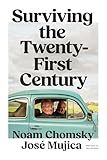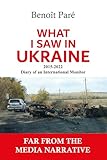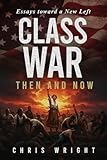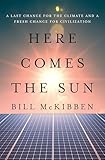 Given the massive changes in geopolitics brought about by the isolationist and bizarre behavior of the Trump administration, activists and scholars have a major role to play in drawing attention to the dangers and possibilities for peace of this embryonic new world order. It is very unfortunate then, that one of the most crucial components in this situation (Korea) continues to be portrayed with an over-simplified banal narrative. North Korea is portrayed as a place where devils rule over freedom haters, and South Korea as little more than an exporter of K-Pop and a nice place to eat. People who care about peace in East Asia must examine Korea’s history more carefully in order to work more constructively toward global partnerships based on mutual understanding rather than hackneyed stereotypes.
Given the massive changes in geopolitics brought about by the isolationist and bizarre behavior of the Trump administration, activists and scholars have a major role to play in drawing attention to the dangers and possibilities for peace of this embryonic new world order. It is very unfortunate then, that one of the most crucial components in this situation (Korea) continues to be portrayed with an over-simplified banal narrative. North Korea is portrayed as a place where devils rule over freedom haters, and South Korea as little more than an exporter of K-Pop and a nice place to eat. People who care about peace in East Asia must examine Korea’s history more carefully in order to work more constructively toward global partnerships based on mutual understanding rather than hackneyed stereotypes.
Let us start at home, where it hurts, by recalling one of the greatest crimes that Koreans have ever committed against Koreans, i.e., the ancient crime of slavery, with a history of a millennium and a half behind it. “Mark Peterson, a former professor of Korean studies at Brigham Young University and one of the few U.S. scholars who has studied Korean slavery, has argued that Korea had the longest, unbroken chain of slaveholding in the world, lasting nearly 1,500 years… By the 17th century in Joseon Korea, an estimated one-third of the population was engaged in some form of coerced labor… Slavery was legally abolished in Korea in the Gap-o reform of 1894 but remained extant in reality until 1930.”
So just as in the U.S., lazy aristocratic types there were allowed to live off slave labor. Nevertheless, when it came to outsiders trying to dominate, exploit, or rule them, Koreans have united to resist and stop such injustice in its tracks. In the new film “Harbin,” the first Japanese Resident-General of Korea Itō Hirobumi (1841-1909) explains to a fellow colonizer:
You know why I’ve always been skeptical about annexing Korea? For centuries the nation of Korea has been ruled by foolish kings and corrupt scholars, but Korea’s common people are the most troublesome. Even for a nation that’s given them nothing, in times of national crisis, they wield a strange power. 300 years ago, Hideyoshi’s invasion was stopped by men who volunteered to fight for the nation. The same is happening today in Manchuria…
There is a kernel of truth here. Koreans have always come together when foreign people attempted to enslave them. The Mongols tried to invade between 1231 and 1259, and they killed hundreds of thousands of Koreans and destroyed precious cultural treasures. The Mongols “demanded exorbitant tribute, including horses and young girls,” but Koreans refused and prevented a full takeover.
Between 1592 and 1598, the Japanese warlord Toyotomi Hideyoshi (1536/37-98), also tried and failed. Japanese attacked Korea in the Imjin War. It was “the largest conflict on the globe in the sixteenth century,” but few people in the West know anything about it. Koreans had lots of help from a multinational force from the Ming Dynasty organized by the Wanli Emperor (1563-1620). The Ming Dynasty fulfilled their promise to protect Korea in accordance with their “tributary system.” China’s defense of Korea was also self-defense. Hideyoshi had set his sights not just on Korea but on China as well.
Unfortunately for everyone, Douglas MacArthur (1880-1964) seems to have been unaware of this history. He made the same mistake as Hideyoshi. On 7 October 1950 the United Nations General Assembly authorized the United Nations forces to cross the 38th Parallel into North Korea. They recommended that “all appropriate steps be taken to ensure conditions of stability throughout Korea.” Their stated aim was “the establishment of a unified, independent and democratic government” for the entire Peninsula. But this is the same U.N. that only oversaw elections in the south of the Peninsula—unfair and undemocratic elections—when they helped to establish the tyrannical government of Syngman Rhee (1875-1965).
In the words of Bruce Cumings, the American historian of Korea, “The UN imprimatur gave to the Republic of Korea a crucial legitimacy.” (The Korean War: A History, Modern Library, 2010, Ch. 5). Instead of making an effort to correct the harm they had done to Korea, the harm of putting their stamp of approval on the elections that put Rhee in power on 15 August 1948, the U.N. allowed MacArthur to invade North Korea, a territory with a separate government, established through separate elections. In the end, they wound up contributing to this tragic national division that separated many millions of Koreans from their loved ones.
On balance, it must be mentioned that the elections in the North were also unfair, as they were planned by the Soviets without much input from Koreans. “Not a single Korean was present” when the Soviet generals “decided that the Assembly would consist of 231 members. They also decided the exact distribution of seats among the parties, the number of women members, and more broadly, the precise social composition of the legislature” (Andrei Lankov, Chapter 1, “The Society Kim Il Sung Built and How He Did It”, The Real North Korea: Life and Politics in the Failed Stalinist Utopia, Oxford UP, 2013, p. 7). But neither had the U.N. made any “commitment to extending the ROK mandate into the North.” (Cumings, The Korean War: A History, Ch. 7). There was no plan for Syngman Rhee to rule over the North. They hoped that MacArthur’s invasion would pave the way for new elections that would establish one government that would rule the entire Peninsula.
MacArthur was not even supposed to get close to the Yalu River (i.e., the river that marks most of the border between Korea and China), or worse, to get close to Chinese or Soviet forces, but he was so arrogant that when he met President Truman in October 1950, he told the President that “there was ‘very little’ chance of [China intervening], and even if the Chinese did decide to cross the Yalu River, the U.S. air force would ‘slaughter’ them.” Foreign Minister Zhou Enlai (1898-1976) had warned MacArthur “more than once that if UN troops approached the Yalu River, the Chinese would enter the war.” MacArthur ignored Zhou’s warnings and sent troops close to the River anyway. It took the Chinese and regular Korean troops only three weeks (between 25 November and 14 December 1950) to push MacArthur’s troops across “the 38th parallel” and back into South Korea. In a word, neither the great warlord Hideyoshi, respected by many in Japan, nor the great general MacArthur, were able to conquer Korea.
Koreans repelled France in 1866, the U.S. in 1871, and the Empire of Japan in 1884, during a period when they were materially impoverished and seriously disadvantaged in terms of military technologies. Sadly, the Empire of Japan did eventually colonize Korea. They held it for a few decades. A group of Japanese brutally assassinated Queen Min of Korea in 1895, but the statesman Kim Ku (1876-1949) took revenge by killing a Japanese man that he believed was involved in the assassination. Later, the Empire of Japan defeated Russia in the Russo-Japanese War (1904–05), and on 5 September 1905 the defeated Russians recognized Japan as the dominant power in Korea, through the Treaty of Portsmouth.
Nobody knew until 1925 that the U.S. had made a secret deal called the Taft-Katsura Memorandum on 29 July 1905 that “expressed an approval by the United States of Japanese suzerainty over Korea and a disavowal by Japan of ‘any aggressive designs whatever on the Philippines.’” Thus, with the cooperation of the U.S., the Empire of Japan colonized Korea, but one Korean gave Japan a painful bee sting. Ahn Jung-geun (1879-1910), the patriot in the above-mentioned film “Harbin,” assassinated the new ruler Itō Hirobumi in 1909.
After several years, a huge number of Koreans came together and rose up against those trying to enslave them. Two million people, out of a total population of twelve million, participated in a movement for independence called the March 1st Movement, during the year following the 1st of March 1919. In response, Japanese killed thousands of Koreans, destroyed hundreds of houses, and arrested 46,000 people in order to suppress the movement. The Movement “greatly enhanced the rise of the Korean communist party,” and despite, or perhaps due to, the intense oppression of communists and labor unions in South Korea, March 1st was eventually established as a national holiday in both the North and the South.
When the Empire of Japan was finally defeated in the summer of 1945, allowing Koreans a brief moment of freedom, the U.S., instead of letting them decide their own destiny, manipulated the U.N. to force the government of Syngman Rhee on the people. His government hired many treacherous people who had collaborated with the Empire of Japan during the colonial period. Of course, the U.S. occupation did not bring peace and prosperity to South Korea. Right away, it brought death, destruction, poverty, and violence to the Koreans in the South.
As Cumings once explained, wars in general do not “start,” and the Korean War certainly did not start in June 1950, as we have been told in the U.S. The U.S. had already deployed troops in South Korea, and had maintained a military government there for five years at that point. It was inevitable that violence broke out right away between those in favor of the U.S.-backed dictatorship in the South and those in favor of the communist/Stalinist government of Kim Il-sung (1912-94) in the North. The “U.S.-advised Korean Army and Korean National Police” were kept “very busy in 1948 and 1949.” (Cumings, The Korean War: A History, Ch. 5).
Kim Il-sung had been a guerrilla field commander in Northeastern China in the 1930s (Chapter 1, “The Society Kim Il Sung Built and How He Did It” of Lankov’s The Real North Korea: Life and Politics in the Failed Stalinist Utopia). He came from a Christian family and his father was a “prominent Christian activist.” He had caused lots of trouble for the Japanese colonizers for many years and was one of the tougher guerrilla fighters in Manchuria (Bruce Cumings, North Korea: Another Country, The New Press, 2003, Ch. 3: “The Legend of Kim Il Sung”). One single battle on 13 March 1940 was “much bigger and more significant than Fidel Castro’s legendary attack on the Moncada Barracks, which later became a centerpiece of Cuban political folklore,” in Cumings’ view.
Thus at least since 1948 or 1949, the people of North Korea have lived under a constant state of war and the threat of invasion by the United States and other countries, including those U.N.-approved nations, almost all from outside East Asia, that interfered in the Korean civil war by fighting alongside the U.S. And for decades North Koreans lived with the threat of nuclear bombs being launched against them by the U.S. military that occupied and ruled the land of their brothers and sisters in the South. Under the armistice that was signed in 1953, everyone was prohibited from introducing qualitatively new weaponry to the Peninsula, but Washington brought in nuclear cannons and Honest John nuclear-tipped missiles in January 1958. And they continued stockpiling nuclear weapons until 1991. One reason why the Civil War has not been resolved during the past several decades is that the undemocratic, militarist government of Syngman Rhee received backing from the U.S. and other foreign governments.
In spite of their isolation and poverty, and the need to spend a huge chunk of the national budget on building a “garrison state” in order to get ready to repel more invasions by powerful and rich countries like the U.S., North Korean society actually enjoyed some significant successes (Cumings, North Korea: Another Country, Ch. 6, “American Failures”). Although South Korea was supported by the U.S., North Korea was richer, even into the 1980s. According to a “Far East Specialist” in the CIA, daily necessities were low priced in North Korea; housing and health care were basically free; everyone had electricity in their home by 1968; and it was an extremely egalitarian society. “Compassionate care for war orphans in particular and for children in general, ‘radical change’ in the position of women… infant mortality and life expectancy rates comparable to the most advanced countries” (until the famine that started in the late 1980s); “no organized prostitution,” and the police were “difficult, if not impossible, to bribe.”
Conclusion
“Disruption of peace in East Asia cannot be of benefit to Japan. Japan must, with all its might and sincerity, preserve peace in the Far East.” Those are the words of Ahn Jung-geun in 1909 in The New Korea (Sinhan Minbo). These words ring even truer today, when one can see the scars of decades of Japanese colonialism and the pain caused to Koreans and Japanese by the U.S.’s “light hold on the jugular,” i.e., the bases in South Korea and Japan. War in East Asia will not benefit Japan.
America is a rich country. Wouldn’t it be nice if people in the U.S. were a little more realistic? Our “unipolar” moment in history has ended. We should now reflect on how we have wronged Koreans, those in the South as well as those in the North, and start investing significant sums on the prevention of war, especially nuclear war.
Koreans are resolutely demanding justice for what the U.S. did to their compatriots, to Japanese, and to others in Hiroshima and Nagasaki through the Atomic Bombings on the 6th and 9th of August 1945. For those who know a little about the above history of the Korean commitment to justice, it is not surprising that it is the Koreans today, 80 years after America launched the Nuclear Era, who are spearheading the campaign to establish the facts of history, hold the U.S. accountable for the bombing, and open a door to a future free of the threat of nuclear war.
In addition to hundreds of thousands of Japanese, tens of thousands of Koreans were directly harmed by the Bombings. Although it may seem that many were living in those cities of their own volition, objectively speaking, it was Japanese colonialism that brought them there, whether they were forced labor or not.
To sum up, the People’s Tribunal will be a “way to tell the truth about nukes,” as Elliott Adams of Veterans For Peace once said. Its purpose will be to hold the U.S. legally responsible for what we did in Hiroshima and Nagasaki and to restore the human rights of Korean atomic bomb victims. The Tribunal could play a role in stopping the nuclear arms race, promoting nuclear disarmament, and preventing a third use of nuclear weapons in the future. If you prefer a peaceful revolution in the style of the Candlelight Revolution of Korea to a violent revolution, please learn about the People’s Tribunal and support it as much as possible.










